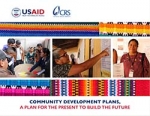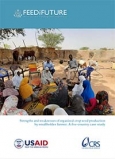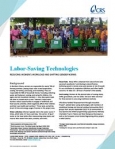Best Practices | October 17, 2023
Community Development Plans
Guatemala continues to be a country with great inequalities. According to the 2020 Human Development Report, Guatemala placed 127th out of 170 countries in the Human Development Index ranking and 119th in the Gender Inequality Index. Inadequate social services and infrastructure, as well as limited economic and educational opportunities exacerbate and reinforce cycles of poverty and chronic malnutrition, particularly in the Western Highlands of Guatemala. This situation affects the majority of citizens, especially rural populations, indigenous peoples, women, and youth.
The “K’atun, Our Guatemala 2032” National Development Plan and the 2030 Agenda for Sustainable Development are a guide for planning and implementing actions to achieve changes in the context of poverty and inequality in the country. In this regard, it is at the community level where strategic planning for development takes on great relevance, since it is at this level that the needs and problems that afflict the population can be identified firsthand, thus allowing for interventions that are more effective.
Considering the above, the CLD Project makes its contribution in the Western Highlands of Guatemala with a five-year project (2016-2021), whose objective is to improve the quality of life of participants, including women, indigenous people, youth, and people with disabilities in more than 200 communities in 30 municipalities in the departments of Totonicapán, San Marcos, Huehuetenango, Quetzaltenango and Quiché.
Specifically, the project seeks to empower citizens through participation in the development and implementation of the CDPs, as well as to ensure their sustainability through the involvement and resources of the private sector.
Catholic Relief Services has taken on the coordination of these efforts, which led to a consortium initially composed of Mercy Corps, NCBA CLUSA, Cáritas San Marcos, Cáritas Los Altos, and the Association for the Comprehensive Development of the Western Highland (ADIPO, for its acronym in Spanish), to implement the project.
The work of the project, in coordination with local organizations and institutions, has resulted in the design, drafting, approval and implementation of CDPs in 203 participating communities. The CDPs are expected to be priority instruments that will contribute to community development management over the next 10 years.
The project is supported financially by the United States Agency for International Development (USAID), with the objective of promoting the participation and inclusion of citizens in the development and implementation of CDPs, equally taking into account the needs and priorities of men and women.





